Decades had passed since he’d even seen the cardboard box, but when its lid finally came off Jack Simmerling ’57 had no trouble remembering where he’d gathered its contents — rainbow-hued pieces of gem-cut stained glass as luminous as the day he’d packed them away. Once they had decorated life inside the Philander C. Hanford house at 2008 South Calumet Avenue, but at the time Simmerling’s 17-year-old self had claimed them from the rubble of the brownstone mansion that burned in February 1953, Chicago considered them worthless.
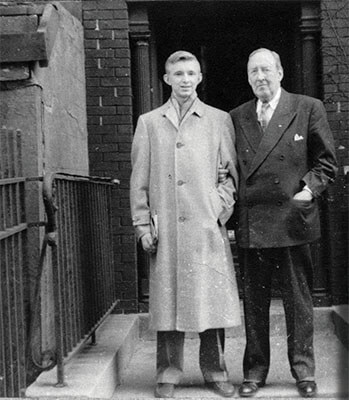
As a teenager, Simmerling had befriended the home’s last owner, middle-aged shopkeeper R.W. Eyster. He took Eyster’s tour of the grand old house on Chicago’s near south side late in its decline. He climbed the 85-foot, hand-carved mahogany staircase, bedazzled by its leather paneling and Moorish motifs, rode up to the third-floor ballroom in a velvet-lined elevator said to be among the first of its kind in a Chicago home, marveled at the Tiffany glass and richly tinted tiles that decorated the master bedroom and dressing room, explored the billiard rooms and bowling alley in the upper basement, and discovered the tunnel that conveyed Hanford, his wife and their children to the coach house and stables, which alone had cost as much as a typical two-story house when the oil tycoon had them built in 1884.
After the house fire, the young Simmerling returned to Calumet Avenue from his home in Blue Island, Illinois, 15 miles away. He salvaged the glass, some blackened woodwork and as many samples of the tile as he could cart off before a demolition crew finished what the conflagration had started. The artifacts would become part of a unique collection of discarded Victorian antiques and Chicago architectural fragments that Simmerling curated over his lifetime while making a name for himself as an architectural and landscape watercolorist.
At some point in his 60s, wondering what would become of the Prairie Avenue part of his collection after he was gone, he thought he might at least have the best of the Hanford window glass made into jewelry. He took a few samples to a local shop to discuss settings.
“Where did you say you got this?” the jeweler asked, holding aloft a prism of fiery purple.
Simmerling loved a good story. He told the man about the Hanfords and the glory of Chicago’s all-but-vanished Prairie Avenue neighborhood — especially the six blocks of Calumet, Prairie, Indiana and Michigan Avenues south of 16th Street hugging the Lake Michigan shoreline, once said to have been home to America’s largest concentration of millionaires. Here at the end of the 19th century lived the first families of the American Midwest, Simmerling explained, such patriarchs of prosperity as Philip Armour, George Pullman, Peter Studebaker and Marshall Field, whose names were synonymous with meatpacking, luxury rail travel, horse-drawn carriages and the department store, and whose fortunes decreed a suburb of stately pleasure domes to rival anything in New York or the capitals of Europe. In short, “Prairie Avenue” became the Gilded Age symbol of Chicago’s triumph over the Fire of 1871 — and the city’s best claim to true cosmopolitan status among the leading cities of the world.
“Ah, Mr. Simmerling,” the jeweler replied. “This is not a piece of purple glass. This is a 16-karat amethyst.”
Jack Simmerling’s eyes widened.
It turned out to be the only semi-precious stone in the lot. The rest was glass. But he could still picture the windows in the Hanford House after 50 years and could only guess how many gems the wreckers swept into the truckloads of charred debris they hauled to the landfill in 1953.
Then again, the lost wealth of Prairie Avenue had never mattered to him as much as its lost beauty — or the stories he could tell about it. Above all, it was the stories that Simmerling, before he died in 2013 at age 77, determined would never be swept away.
Try to find Prairie Avenue on your own — or the Glessner House Museum and its John J. “Jack” Simmerling Gallery of Prairie Avenue History — and chances are you’ll miss it. Of the hundreds of mansions and lavishly appointed row houses that shaped the neighborhood at its 1904 zenith with mansard roofs, ornamented stone porticos, wrought-iron fences and a smorgasbord of architectural styles from the previous 300 years, 11 remain — conspicuous islands of history scattered in a sea of parking lots, boxy factories and warehouses, and a few attractive townhouse developments that are injecting new life into the 21st century streetscape.
Everything has changed. At the turn of the 20th century, the “sunny street that held the sifted few,” as the neighborhood was known in its heyday, had offered residents sweeping views of Lake Michigan. Fifty years later, the ghosts of Philander Hanford and his neighbors would have gazed out their tall, arched parlor windows at the Meigs Field Airport. Cruise north along Lake Shore Drive today, pass Soldier Field where the Bears play, and that’s it. The neighborhood the Chicago Inter-Ocean in 1887 called America’s “residence street par excellence” is somewhere there in your rearview mirror, swallowed up by a century of constant transformation.
When Jack Simmerling made his first trip to Prairie Avenue in 1947, he had no difficulty finding it. His guide was George Washington Bargerbush, once known to department store magnate Marshall Field Sr. as an errand boy, but by then known to Jack as Grandpa. Field’s abandoned red brick mansion at 1905 South Prairie was one of a few dozen empty or repurposed grand palaces still standing along Prairie and Calumet at the time, and Grandpa Bargerbush was friends with the caretaker.
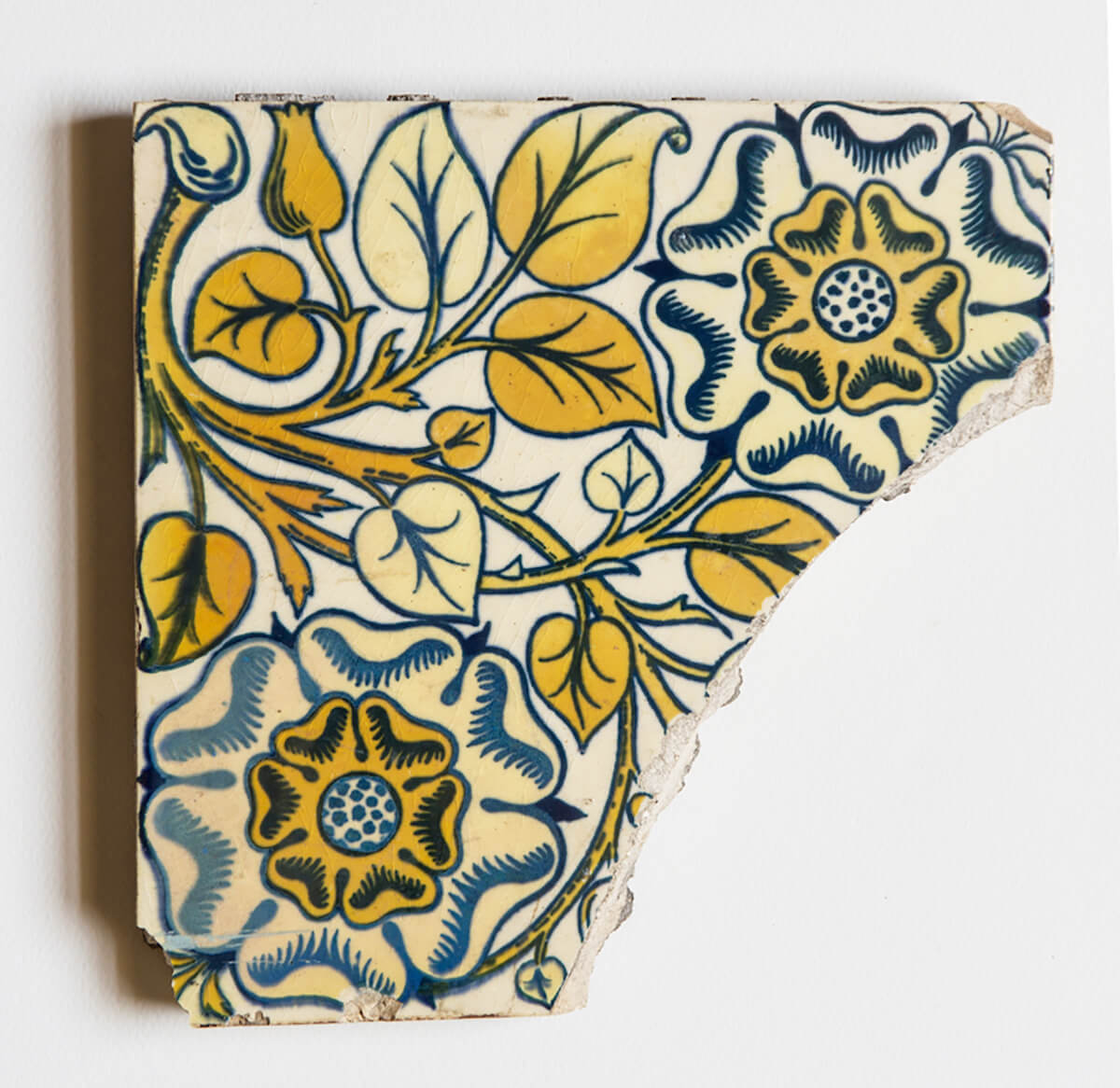
That visit was enough to infect Jack’s heart with longing. Designed by the Vanderbilts’ architect, Richard Morris Hunt, the Field house and its marble halls would in 1886 host — at a cost near $2 million today — a Mikado-themed children’s ball for which James McNeill Whistler designed the party favors. The boy could see the beauty in the dusty yellow-silk wall hangings and the floors of inlaid wood, and the mysteries of all that had happened there — and what had become of Prairie Avenue — began to draw him in.
He returned often, listening to the stories of anyone who’d give him time. The boy wasn’t the only collector of neighborhood lore, but he was by far the youngest. In 1949, the historical novelist Arthur Meeker Jr. published Prairie Avenue, his fictionalized reminiscences of growing up on the street, and Jack soon made the acquaintance of Herma Clark, dowager columnist of the Chicago Tribune, whose popular “When Chicago Was Young” column was capturing Gilded Age Chicago society for post-World War II readers down to the last satin-gloved detail. By age 16, Jack himself was delivering half-hour lectures about Prairie Avenue and other ghosts of modern Chicago, painting his own publicity posters and charging 25 cents admission.
Storytelling was but one of his lucrative talents. Mostly self-taught, Jack was already painting prolifically, and Prairie Avenue was a favorite subject. Charmed by a local teenager’s devotion to something other than baseball or the movies, the Sunday Tribune in October 1951 featured his earliest sketches and oil paintings of Prairie Avenue landmarks. Reporters couldn’t get enough. “The future Mrs. Simmerling,” the newspaper noted in a 1957 story, “will have to share the young artist’s appreciation for late 19th century American design.” By then, the Pullman Bank was a regular client. Jack would paint scenes of Chicago’s historic Pullman neighborhood for the bank’s notecards and Christmas cards for years to come.
While sales of Meeker’s novel, readership of Clark’s columns and attendance at Jack’s lectures seemed strong, the houses themselves and the artifacts within them had lost their value as the shadows cast by the “stormy, husky, brawling” industrial shoulders of poet Carl Sandburg’s “Chicago” lengthened along those streets. The rail line that could carry railroad mogul George Pullman from his own back gate at 18th and Prairie to his company town 12 miles south would prove part of Prairie Avenue’s undoing. The wealthiest families began to move away from the encroaching noise and grime toward more fashionable surroundings. There were stories of failing fortunes, but most of Chicago’s elite set were still comfortable enough to simply lock the doors on their chateaux, rarely to return. By 1920, says Bill Tyre, author of Chicago’s Historic Prairie Avenue, only 26 of the original families still lived there.
The residential neighborhood’s vanishing act began in the 1900s, Tyre says. Soon, the razing of the late banker Samuel Allerton’s colossal Victorian and its replacement with the headquarters of the Hump Hairpin Manufacturing Co. portended a grittier future. During the Roaring ’20s, the automobile and publishing industries dropped millions in the rezoned Prairie Avenue commercial district to buy land and expand their operations. Demolitions accelerated during the Depression, stalled out, then resumed with voracity soon after the war. Vacant houses often became offices and boardinghouses. On the eve of the 1953 Hanford fire, an estate sale notice for the home offered “a complete room worth over $25,000” for $1,000.
As it turned out, the estate of the late R.W. Eyster would get nothing but smoke, ashes and the land value of the lot. Apart from the family, no one seemed to care. That’s how far the furnishings and frippery of Victorian America had fallen at the dawn of the doo-wop era. Young Jack considered the hastening disappearance of Prairie Avenue his “own private sorrow.”
But know this about Jack Simmerling: Faced with loss, he didn’t retreat. He may have been, as one Notre Dame professor put it, “the last Victorian,” but he was surely, as Margie, his wife of 55 years, would say, a mirthful, hopeful, forward-looking person. He preserved, not with sentimentality, but with heart and vision.
He took his first job with a demolition crew at age 14 in 1950. Later he would talk about chucking debris onto a pyre and chatting with the men while they smoked corncob pipes and shot at rats with a BB gun. But he always found foremen glad to let him claim whatever he wanted before the men struck the first match and tucked in with their crowbars and wrecking ball.
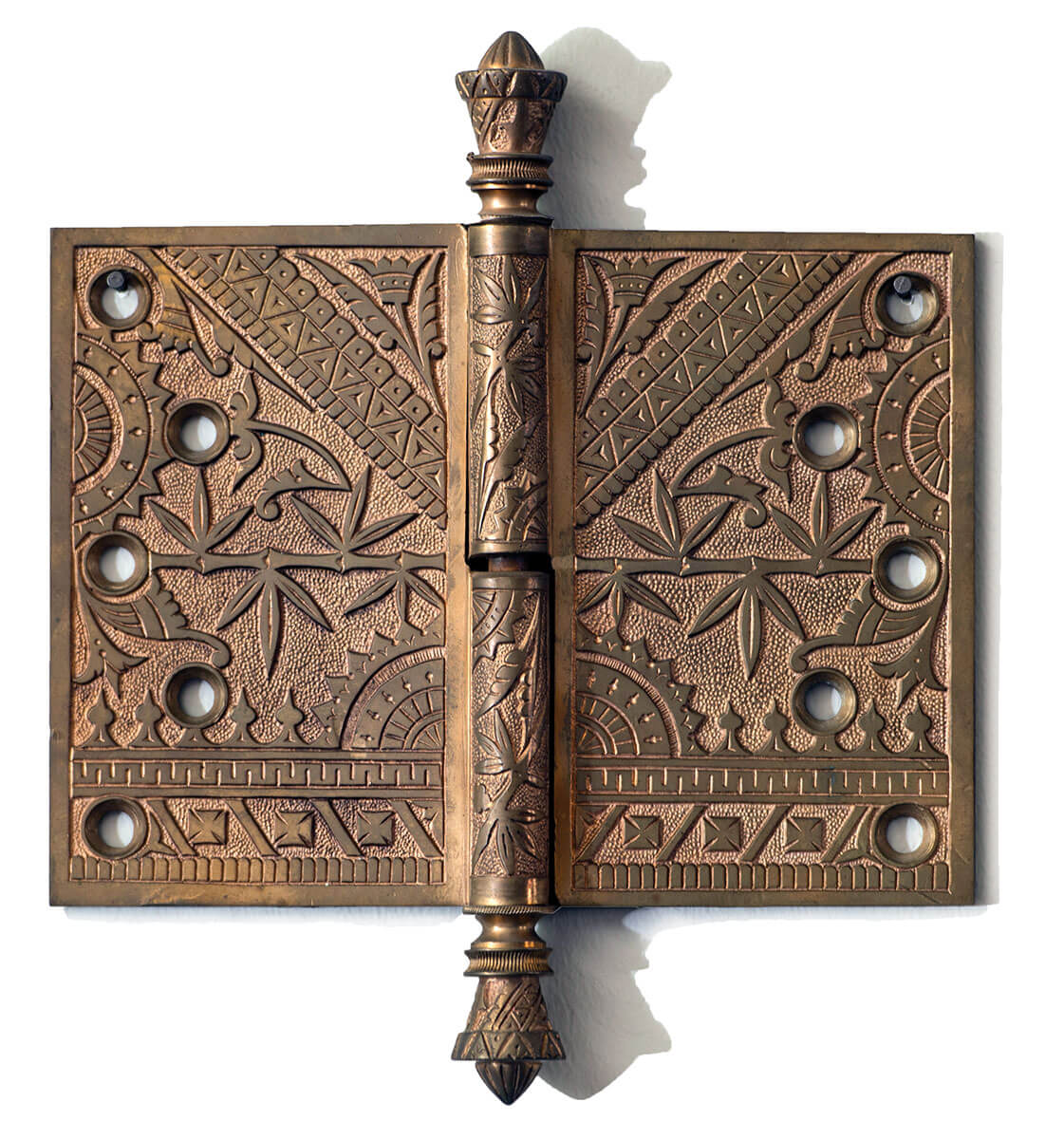
There were heartbreaks, like the day he arrived too late to claim some Gobelin tapestries and found them burning. Usually, though, Jack would enter a house with his sketchpad and enough time to document floor plans and note the locations of items he’d claim: fireplace mantels, paneling, tiles and terra cotta, banisters and balusters, hinges and doorknobs, lighting fixtures, furniture. The odd mirror or clock. All of it beautiful in its own way. And all of it for free.
One afternoon, while helping Jack load a Tiffany floor lamp into his car, the day laborer who helped Jack get these jobs — and set stuff aside for the boy whenever he couldn’t make it — told him he should forget the antiques and reach instead for the lead and copper plumbing and gutters. At least he could get a little money for that.
John Simmerling Jr. was born December 1, 1935, the only son of Esther and John Sr., an electrical utility executive. Noting the boy’s emerging interests in art, music and collecting, the family built him a log cabin studio in the backyard of their Blue Island home. He learned to mix colors from a local artist and needed little encouragement to begin capturing the life and beauty he saw around him. His earliest subjects, at age 3, were electric fans, but his fascination would broaden to pumpkins and wildflowers, to Halloween themes and winter scenes.
“He could paint snow better than anyone,” says his daughter Victoria, with whom he worked for 26 years at his Heritage Gallery on West 103rd Street in Chicago’s Beverly neighborhood. The colors in snow and the light in puddles beguiled him. “He never explained why,” his widow says. “He’d say, ‘Margie, look at — look real hard at that puddle!’” He’d be drawn to it, she says, much the way he was drawn to Prairie Avenue, to old churches and the Gold Coast, north of the Loop, the first neighborhood to eclipse Prairie Avenue’s prestige.
Abandoning Prairie, real estate baron Potter Palmer completed his 42-room, medieval-themed Gold Coast mansion in 1885. Arthur Meeker described it as a “liver-colored goldfish castle”; more recently the Tribune appraised it among the city’s seven lost wonders. When it, too, came tumbling down in 1950, Jack was there to capture the demolition in a series of five documentary paintings, overcoming his shock with oils and canvas. He hung those paintings on the walls of his cabin, and the juxtaposition of decaying grandeur with the blunt forces of Chicago’s rising and falling industrial fortunes would become an enduring theme of his artistic career.
Jack’s parents sent him off to Notre Dame in a yellow convertible in the fall of 1953, and they soon followed, buying a lake cottage near LaPorte, Indiana, so they could be near him. On campus he suffered one of the first stings of his creative life. Assigned to paint hands, a classic test of a painter’s skill, Jack presented his best effort. A professor likened it to carrots lying on a table. He’d never felt he could paint people well, and that crushing assessment sealed it. People never appear in Simmerling’s paintings.
Otherwise, Notre Dame shaped Jack’s talent for the better. He abandoned oils because of a skin allergy, soon to reveal a rare gift for the color control, sharp lines and structural precision required by architectural rendering through a medium as unpredictable as watercolor. Stanley Sessler, the Russian-born painter and head of the art department, became a mentor and friend. “Stanley loved Jack. He did everything he could for him,” Margie Simmerling says. The last studio assistant to the American portraitist John Singer Sargent, Sessler eventually gave his protégé one of Sargent’s palettes.
As a senior, Jack illustrated the cover of the last Scholastic before graduation. He sketched and painted all over the walls of his bedroom in 238 Alumni Hall, experimenting with colors, techniques, ideas. He ignored warnings to repaint before move-out day, until he received a slip in place of his diploma saying his degree would be withheld until he’d cleaned up. He did.
Years later, Jack and Margie would raise what their daughter Mary calls a family of talented, “challenging” children. When her brother Carlos repeatedly set their basement on fire with his chemistry set, Jack reacted with understanding. “I feel like he told us about the dorm room to teach us that expressing ourselves, exploring the limits of what we’re passionate about, wasn’t an altogether bad thing,” she says.
For Mary, what makes her father’s work distinctive is his use of edge tension, compositional elements that pull the eyes away from the center toward things one might otherwise miss. Jack often employed it to add life to placid scenes, as he did with dune grass, birds and the playful hues of water and sky in one watercolor of a beloved stretch of Indiana beach on Lake Michigan. The painting, one of Mary’s favorites, hangs on the wall of her apartment in New York City, where its colors change with the time of day. “He always has interesting stuff going on at the perimeters,” she says.
It was a life lesson for his children and grandchildren, reflected in his art: Don’t cling to the center. Attend to the edges, where things might be fraying. “At least in my small family — we talk about edge tension, and how important that is in life. He taught us that.”
Jack met Marjorie MacCartney, then a Spanish and education major at Chicago’s Rosary College, on a football weekend. She was dating one of his roommate’s friends, and he took advantage of a rare, private moment — a little edge tension, one might say — to ask her out. They married in Blue Island the year after graduation, and honeymooned one night at Notre Dame’s Morris Inn so Margie, now a teacher, could return to her grade-school classroom that Monday morning. Returning on Sunday afternoon, they detoured to Calumet Avenue, where Jack wanted to see the demolition of the Charles Starkweather house, one of the first built in the neighborhood. Arthur Meeker had grown up in the home, which had become a storage shed for a butter and egg company. Standing amid rubble, Jack snapped a photo of his bride in her white shoes and new coat, April sunshine pouring in through the open roof.
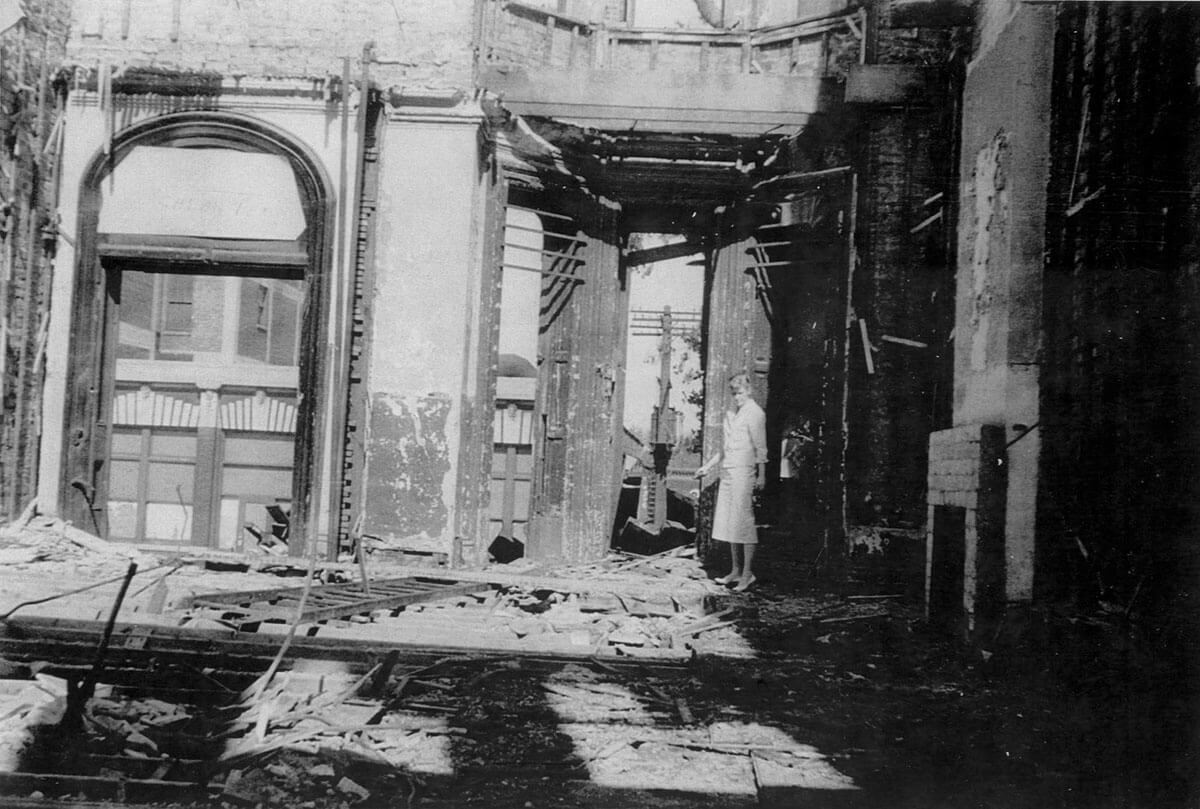
The “future” Mrs. Simmerling adored her husband, and she liked the Victorian Era just fine.
Having established that neither one knew how to make dinner, Margie recalls, they bought a cookbook and headed home. Cathy, the first of seven children, was born the following spring. The Simmerlings moved to Beverly on Chicago’s far south side, and as the family grew and Jack’s Heritage Gallery and commissions started to take off — his career client list would eventually include the City of Chicago, the Chicago Symphony, Notre Dame and Saint Mary’s, Lexus — the couple purchased the I.S. Blackwelder home, a historic Victorian mansion with 27 broken windows and no heat, set on two acres.
Times were bad for home loans in 1969, but Jack had established himself as a man of prospects and sterling reputation. The president of the Beverly Bank lent the couple nearly double the purchase price of $10,000 to finance repairs on the house, and a string of friends — an electrician, a plumber, a housepainter — returned various kindnesses Jack had done them to get the place in shape for the young artist and his family.
His easygoing manner made him friends just as naturally with an Amish farmer and a Japanese prince as it did with Beverly’s garbage men. On a trip to the Biltmore estate outside Asheville, North Carolina, Jack set up an easel and began painting, then struck up conversation with a passerby who turned out to be a Vanderbilt. That lifelong friendship led to paying work. When he wanted to buy a first edition of Ray Bradbury’s Dandelion Wine for $500 at a charity auction, Margie insisted he write to the science-fiction author instead. Bradbury sent him a signed copy and then, during a steady correspondence that spanned decades, sent several more. In later years, when Jack shipped Bradbury an antique green bottle of the kind the writer described in his novel, Bradbury responded with a book, signed once more beneath the sketch of a cobweb, Bradbury’s own likeness in the middle. “Jack,” he wrote, “this is my website.”
“Everyone knew my dad; everyone loved him,” Victoria says. “He was kind of considered the mayor of Beverly.” Jack didn’t accept that moniker, Margie makes clear, but he was one of a few local businessmen who kept an eye on problems around the neighborhood, fixed things, watched out for less fortunate neighbors.
He also took pleasure playing practical jokes on his children. They learned to check before biting into the bee-and-twig sandwiches he packed for lunch, and they got used to picking up their real lunches at the school office. One Friday in spring, a teenage Mary brought friends home for a sleepover to find her bedroom full of Halloween decorations.
There was that edge tension again. But as Margie sees it, her husband’s love for his family, their neighbors and the life they shared together found expression in his art. “I don’t think people really knew how good an artist he was because he was in Beverly,” she says. “He never had a gallery on Michigan Avenue or anything.”
Today, even after Jack’s death in 2013, it would be difficult to find a Beverly home that doesn’t have an original Simmerling on its walls. His pen-and-ink sketches and watercolors of the Beverly “Castle,” a local historic landmark, are ubiquitous. When a fire in a grocery two doors down forced him to move his gallery after 30 years in the same location, the customers followed. Now they could stop by after getting off the commuter train, if just to talk to Jack. There they’d find him, paintbrush in hand with a phone on his shoulder, or humming to the classical music he’d blast from the stereo. Even during his last days, when dialysis appointments took him away from the gallery for hours on end, his optimism prevailed. “I’m going to my favorite place now,” he’d say, heading for the door.
“He loved life,” Victoria says, shaking her head.
Sometime after Philander Charles Hanford sold a majority interest in his local petroleum company to John D. Rockefeller’s Standard Oil, his fortunes soured. The panic of 1893 triggered the worst recession in the United States prior to the Great Depression, and Hanford became one of its casualties, killing himself in the summer of 1894. His family moved to New York, leaving the house — with the images of Emma. Hanford and her daughter carved into its front door — in the hands of a caretaker.
More than 30 years later, R.W. Eyster bought the house, fully furnished, clothes still in the drawers. He would later tell Jack Simmerling that he and his friend Robert Ripley, of Ripley’s Believe It Or Not! fame, planned to turn it into a museum. Eyster took Jack out for lunch to celebrate his 16th birthday, but their friendship ended the following summer when the ancient, velvet-lined elevator inside Eyster’s white elephant failed. Eyster died from his injuries.
Simmerling’s affection for Eyster never faded. He thanked “The Linen Man” in the dedication of a book he co-authored in 1997, Chicago’s Old Houses: Lore & Legend, which devotes 12 pages to the Hanford House and his collection of its artifacts. Going through the research files that Jack would hand over with the rest of his Prairie Avenue collection, Bill Tyre, executive director and curator of the Glessner House Museum, says he found a note Jack scrawled on a folder with Eyster’s name on it: “After I am dead, please pray for this man.”
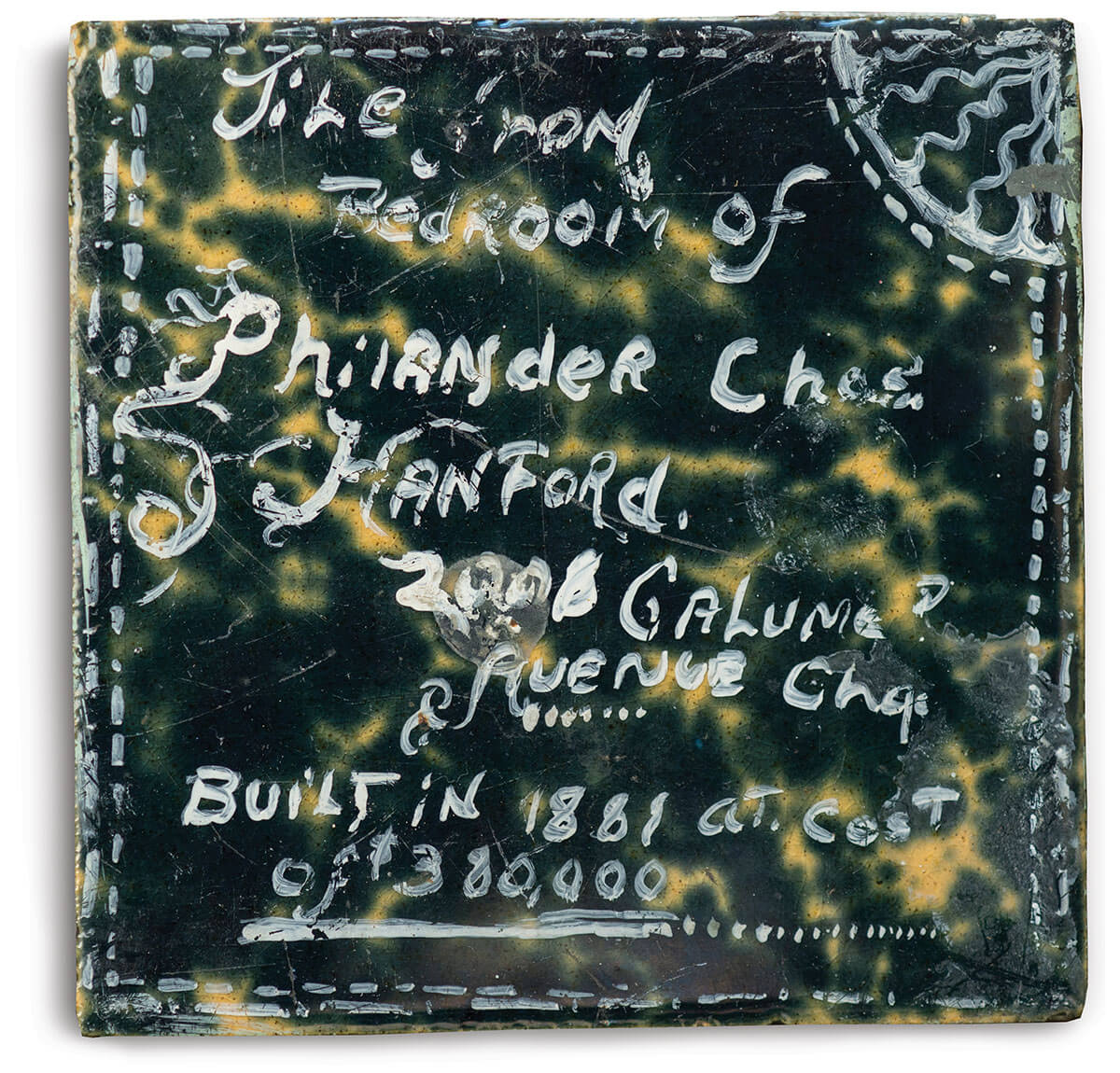
Terrible accidents continued to befall the Hanford House after 1953, deepening Jack’s sense of intrigue. He told Tyre he thought the place was cursed. During demolition, Tyre says, a sheet of glass fell out of a window frame, severing a workman’s arm. When new owners paved the property for a parking lot, they failed to notice the existence of the sub-basement where Hanford kept his wines. The ensuing sinkhole reportedly devoured several cars.
Jack’s fascination with such stories was tinged with concern for the souls involved: He once traveled to Joliet, Illinois, to pay his respects at Hanford’s grave. And he embraced the aesthetics of Victorian affluence but not the lifestyle. When his turn came to pass along the treasures he had stored for so long, he would keep a few items Margie loved, then find solace in committing the rest to a permanent home at Glessner. Mary says he saw himself as the custodian of these pieces, not as their owner.
“Jack had a mistress the whole time we were married,” Margie admits. “It was Prairie Avenue.” Family drives on Sunday afternoons typically turned up the street. Mary remembers walking through ruins as a little girl. Once, during the neighborhood’s darkest days, Victoria says, Jack was shot at.
The street became a place of consolation for him when the Simmerlings endured their own darkest days. During a Memorial Day weekend trip to the lake cottage in Indiana, someone realized 2-year-old Lizzie was missing. The toddler had wandered into the water. “At 32, you don’t know what can happen,” Margie says, a long-suffered grief steadying her voice. “Life has never been the same.”
A year later, however, Mary was born. The Simmerlings made sure the big house their children grew up in was filled with hope and love.
It was filled, too, with the artifacts and artwork that made their home the original Simmerling museum. “You wouldn’t walk in and say, ‘This is a museum,’” Margie says. “You’d say, ‘This is a home,’ but with the tall ceilings and those spacious rooms, it just fit.”
Margie guesses the tours began when the youngest kids were in junior high. Jack made arrangements with the Art Institute of Chicago. Buses might arrive at 11 on a Saturday morning and Jack would give tours and talks before and after lunch. Living in a museum wasn’t easy, she says. “We’d race around with the cleaning lady on Saturday morning,” dusting, making beds, putting flowers in every one of the bedrooms and bathrooms.
For a while, maybe in the late 1960s, the collection kept growing. Chicago established the Prairie Avenue Historic District in 1979, but the wrecking ball finally claimed its last house in 2002. By that time developers had converted Central Station and the Eastman Kodak plant into housing and the Hump Hairpin Manufacturing Co. building was itself demolished, making way for the neighborhood’s first new residential construction in 95 years.
Life breathed anew on Prairie Avenue. Jack Simmerling, still painting and teaching the youngest of his 12 grandchildren lessons in art and mischief, was pleased. But at that point he still didn’t know what would become of his collection, or the stories it had to tell.
The Glessner House Museum website says the “internationally known architectural treasure” that Boston architect Henry Hobson Richardson built for Frances and John Glessner in 1887 represents “a radical departure from traditional Victorian architecture” and would inspire the distinctive styles of Louis Sullivan, Frank Lloyd Wright and Mies van der Rohe. Where most Prairie Avenue houses stood back from the street, Richardson’s fortress-like walls begin at the sidewalk, leaving room for a quiet courtyard within. An offended George Pullman said, “I do not know what I have ever done to have that thing staring me in the face every time I go out of my door.”
After the Glessners died, their daughter shipped most of their belongings to the family’s summer estate in New Hampshire. When the house faced demolition in 1966, the Chicago School of Architecture Foundation purchased it. Now the museum is a nonprofit organization devoted to Prairie Avenue history. Though unusual, the house is well-suited to the task: When the Glessner descendants returned the original furnishings, curators found the household preserved virtually intact, down to the pencil stubs in Mr. Glessner’s desk drawer.
Over the years, Jack attended every event he could at the Glessner House. An amateur pianist, he enjoyed parlor recitals on the Glessners’ period instrument. But by the time Tyre approached his mentor in 2011 to convey the museum’s interest in his collection, he had made other inquiries. Always the answer was the same: The collection needed an endowment to support it. Ironically, considering the sumptuous backstory, Jack didn’t have the money.

For Glessner, Simmerling’s collection was a one-of-a-kind opportunity at the heart of the museum’s mission, “far too important to lose,” Tyre says. They’d take it — and are now raising $500,000 to renovate the second floor of the carriage house into a permanent Simmerling gallery.
Tyre says Glessner’s status as the neighborhood’s architectural outlier complements the Simmerling collection, a tiny portion of which is on display in temporary space. “What people love is that it puts the Glessner House in historical context,” he explains. Jack’s fragments help them compare the home’s design with its former neighbors.
He remembers the day they moved the first load of artifacts from the Simmerlings’ home in Beverly. It was December 1, 2012, Jack’s 77th birthday. Turning off 18th onto Prairie, Tyre sensed an endangered history coming full circle. “Fifty, 55 years earlier, Jack had driven away with these pieces off Prairie Avenue, and here I was bringing them back. It was this great feeling.”
Jack had enough time left to go through boxes, explain his files, see the architect’s plans for his gallery and, most important, give several hours of interviews, telling stories. Still, it was a painful time for the Simmerlings. Cathy died in January 2013. Jack followed her that July.
Victoria remembers the move day as one of the best birthday presents her father ever received. Jack Simmerling had saved everything he could from Prairie Avenue, and, when the time came, Prairie Avenue was ready to save it right back.
John Nagy is an associate editor of this magazine.
